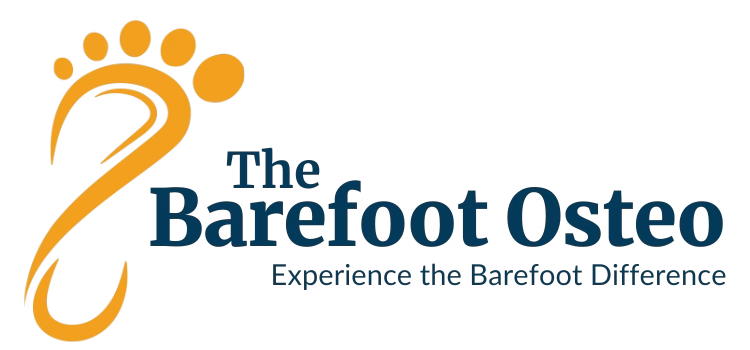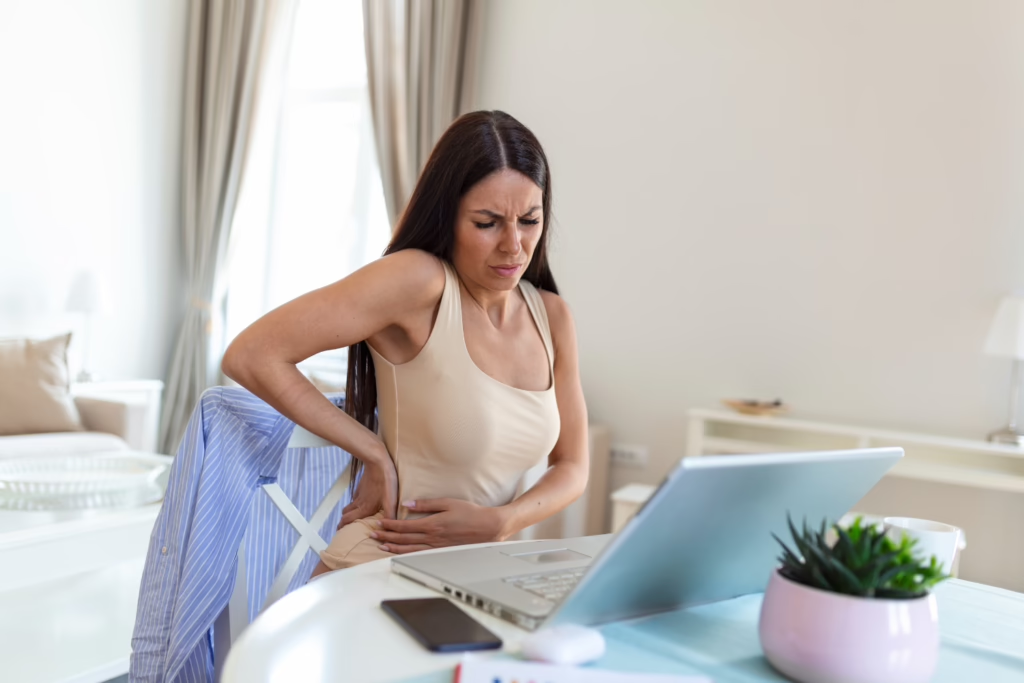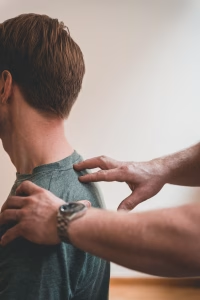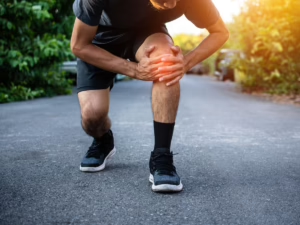Osteopathy for hip pain is a proven approach that addresses this widespread issue, which impacts individuals across all age groups and activity levels. Whether the discomfort originates from an acute injury, repetitive overuse, or a chronic degenerative condition, it can profoundly influence your ability to move and enjoy daily life. This type of pain often disrupts essential activities such as walking, bending, or simply getting up from a chair. As a central pillar of the body’s weight-bearing system, the hip serves a crucial role in maintaining stability, absorbing impact, and facilitating fluid movement.
Hip pain doesn’t usually happen on its own. It’s often connected to other problems like poor posture, weak muscles, or issues with the spine or pelvis. Because everything in the body is connected, treating hip pain effectively requires understanding and addressing the underlying causes, not just the symptoms.
If you’re in Warrnambool and struggling with hip pain, osteopathy offers a natural and comprehensive solution. Osteopaths look at how your whole body works together and create a plan to address not just the symptoms but the root cause of your discomfort. This blog will explore the anatomy of the hip, common problems that cause hip pain, and how osteopathy can help you feel better and move with confidence again.
Anatomy of the Hip
The hip joint is a ball-and-socket joint formed by the head of the femur (thigh bone) and the acetabulum of the pelvis. It is one of the most stable and robust joints in the body, designed to withstand significant weight and stress. Key components include:
- Articular Cartilage: Covers the surfaces of the femur and acetabulum, allowing smooth movement and absorbing shock. Over time, this cartilage can wear down, leading to conditions like osteoarthritis that compromise joint function.
- Ligaments: Strong bands of tissue that connect the femur to the pelvis, providing stability. These ligaments are crucial for keeping the joint secure during both everyday movements and high-impact activities.
- Muscles and Tendons: Surrounding muscles such as the gluteus maximus, gluteus medius, iliopsoas, and adductors work together to move and stabilize the hip. These structures play a vital role in walking, running, and maintaining balance.
- Bursae: Fluid-filled sacs that reduce friction between tissues. When these sacs become inflamed, they can contribute to painful conditions like bursitis.
The hip’s close connection to the pelvis and spine means that dysfunction in these areas can contribute to hip pain. For instance, a misaligned pelvis or tightness in the lower back muscles can create additional strain on the hip joint, exacerbating discomfort. This interconnectedness underscores the need for a holistic approach to treatment.
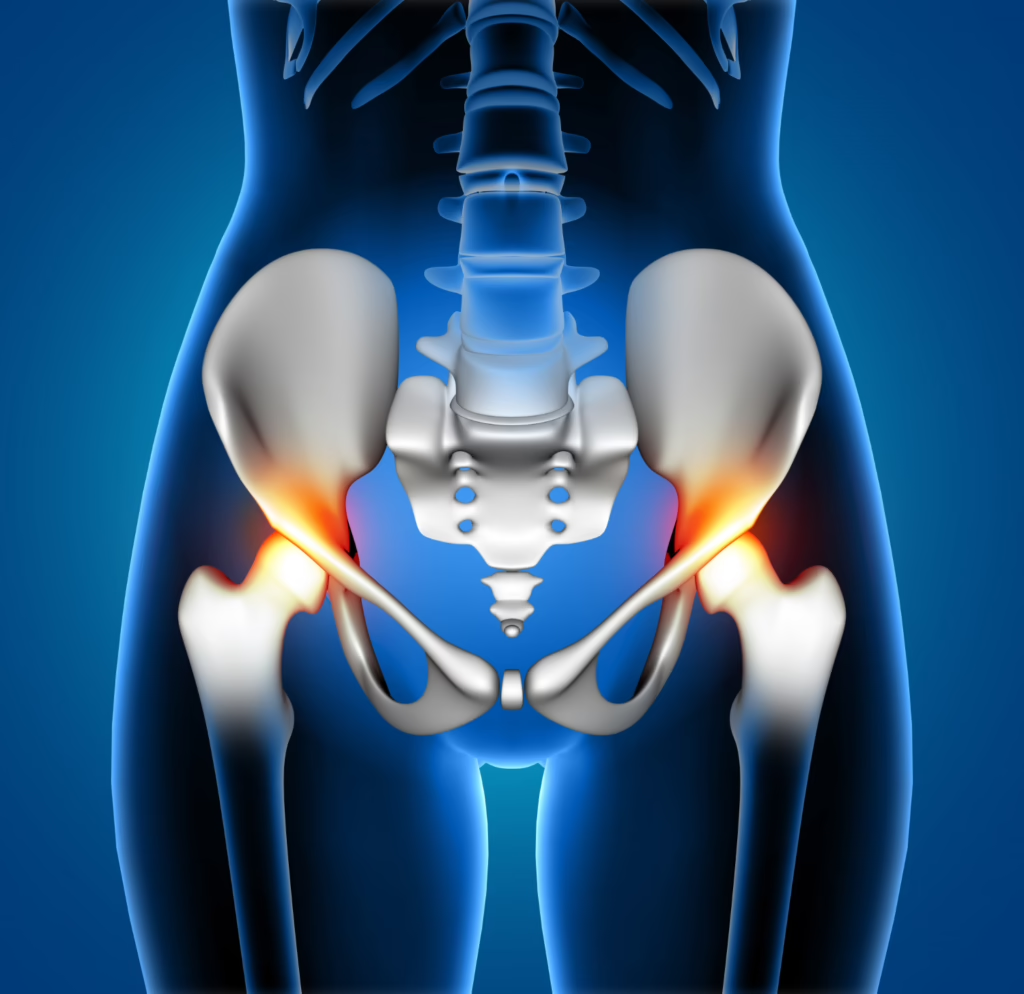
Common Hip Problems
Hip pain can arise from various conditions, including:
- Osteoarthritis: A degenerative condition where the cartilage in the hip joint wears away, causing pain, stiffness, and reduced mobility. This is especially common in older adults or those with a history of joint injuries.
- Hip Labral Tears: Damage to the cartilage that lines the acetabulum, often resulting from repetitive motion or trauma. This condition can lead to a sensation of catching or locking within the joint.
- Bursitis: Inflammation of the bursae around the hip joint, leading to pain and tenderness. This condition is often caused by repetitive movements or prolonged pressure on the hip.
- Hip Impingement Syndrome: Occurs when there is abnormal contact between the femur and the acetabulum, limiting movement and causing pain. This condition is often seen in athletes or individuals with structural abnormalities.
- Piriformis Syndrome: Tightness or spasm in the piriformis muscle can compress the sciatic nerve, leading to hip and leg pain. This condition is frequently associated with prolonged sitting or poor posture.
Each of these conditions requires a tailored treatment approach to address the underlying cause and promote effective recovery.
Hip Pain Through an Osteopathic Lens
Osteopaths approach hip pain by considering its relationship with other parts of the body. An osteopathic assessment typically includes:
- Postural Evaluation: Identifying imbalances in posture and alignment that may contribute to hip pain. For example, a forward-tilted pelvis or uneven leg length can place undue stress on the hip joint.
- Palpation and Movement Testing: Assessing the range of motion and identifying areas of restriction or tension. This hands-on approach allows osteopaths to pinpoint specific problem areas.
Treatment may involve:
- Soft Tissue Techniques: Reducing tension in the muscles and fascia around the hip to improve mobility. Techniques like myofascial release or targeted massage can alleviate tightness in key muscles such as the hip flexors or glutes.
- Joint Mobilization: Enhancing movement in the hip joint and surrounding areas to restore alignment and function. Gentle manipulations can help improve joint mechanics and reduce pain.
- Biomechanical Correction: Addressing gait or movement patterns that place excessive strain on the hip. This might include exercises to strengthen weak muscles or advice on ergonomic adjustments.
By addressing these factors, osteopathy not only relieves pain but also promotes long-term recovery and prevention. This holistic approach ensures that patients experience comprehensive care tailored to their unique needs.
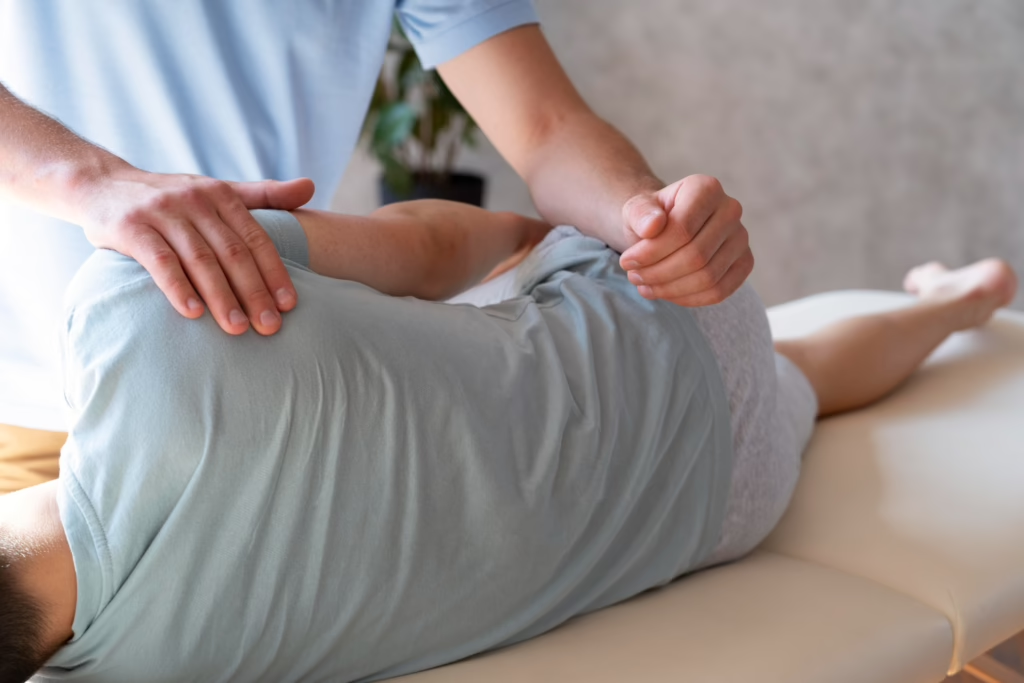
FAQs About Hip Pain and Osteopathy
What are the common causes of hip pain?
Hip pain often results from overuse, injuries, or degenerative conditions like osteoarthritis. Osteopaths in Warrnambool can assess how these factors, combined with issues like poor posture, contribute to discomfort.
How does osteopathy differ from other treatments for hip pain?
Osteopathy focuses on the body as a whole, using manual techniques to address the root causes of pain. This approach is different from treatments that focus solely on symptom management.
Can osteopathy help with hip pain after surgery?
Yes, osteopathy can support post-surgical recovery by improving mobility, reducing scar tissue, and enhancing overall biomechanics to prevent future issues.
Is osteopathy effective for sports-related hip injuries?
Absolutely. Osteopaths often work with athletes to address injuries and improve performance. Techniques are tailored to the individual’s activity level and goals.
How many osteopathy sessions are needed for hip pain?
The number of sessions depends on the severity of the issue and how the body responds to treatment. Many patients in Warrnambool report improvement within a few sessions.
Final Thoughts
Knee pain can severely limit your ability to move freely and fully enjoy daily life, whether it’s walking, exercising, or simply performing household tasks. For many people, knee discomfort can gradually worsen over time, making even the smallest movements feel challenging and painful. However, it doesn’t have to be a lasting burden. Osteopathy for hip pain offers a holistic, non-invasive approach to treatment that focuses on restoring balance within the body, improving joint function, and addressing the underlying causes of discomfort. By looking at the entire body as an interconnected system, osteopathy goes beyond treating symptoms to provide long-lasting relief.
Whether you’re dealing with a sports injury, arthritis, ligament strains, or general wear and tear, osteopathy offers personalized care tailored to your needs. Treatments involve a combination of hands-on techniques, postural corrections, and targeted exercises designed to strengthen the surrounding muscles and improve overall knee stability.
Healthy, pain-free knees are essential for staying active, independent, and maintaining a high quality of life. Our osteopathy services in Warrnambool have earned the trust of the community for providing patient-focused, effective care to restore mobility and reduce pain. If knee pain is holding you back, now is the time to take action. Book a consultation with our Warrnambool osteopaths today and take the first step towards regaining confidence, strength, and ease of movement. You don’t have to live with knee pain—osteopathy can help you move freely again!
REFERENCES:
Bedi, A., Dolan, M., Leunig, M., & Kelly, B. T. (2011). Static and dynamic mechanical causes of hip pain. Arthroscopy: The Journal of Arthroscopic & Related Surgery, 27(2), 235–251.
Chamberlain R. (2021). Hip Pain in Adults: Evaluation and Differential Diagnosis. American family physician, 103(2), 81–89.
Griffin DR, Dickenson EJ, O’Donnell J, et al. (2016). The Warwick Agreement on femoroacetabular impingement syndrome (FAI syndrome): an international consensus statement. British Journal of Sports Medicine, 50:1169-1176.
Hashimoto, Shingo MD, PhD1; Rai, Muhammad Farooq PhD1; Gill, Corey S. MD1; Zhang, Zhiqi MD1; Sandell, Linda J. PhD1; Clohisy, John C. MD1. Molecular Characterization of Articular Cartilage from Young Adults with Femoroacetabular Impingement. The Journal of Bone & Joint Surgery 95(16):p 1457-1464.
Khan, M., Habib, A., de SA, D., Larson, C. M., Kelly, B. T., Bhandari, M., Ayeni, O. R., & Bedi, A. (2016). Arthroscopy up to date: Hip femoroacetabular impingement. Arthroscopy: The Journal of Arthroscopic & Related Surgery, 32(1), 177–189.
Logerstedt D, Grindem H, Lynch A, et al. Single-Legged Hop Tests as Predictors of Self-Reported Knee Function After Anterior Cruciate Ligament Reconstruction: The Delaware-Oslo ACL Cohort Study. The American Journal of Sports Medicine. 2012;40(10):2348-2356.
Reynolds, D., Lucas, J., & Klaue, K. (1999). Retroversion of the acetabulum. The Journal of Bone & Joint Surgery British Volume, 81-B(2), 281-288.
Tibor, L. M., & Sekiya, J. K. (2008). Differential diagnosis of pain around the hip joint. Arthroscopy: The Journal of Arthroscopic & Related Surgery, 24(12), 1407–1421.
Wilson, J. J., & Furukawa, M. (2014). Evaluation of the patient with hip pain. American family physician, 89(1), 27–34.
